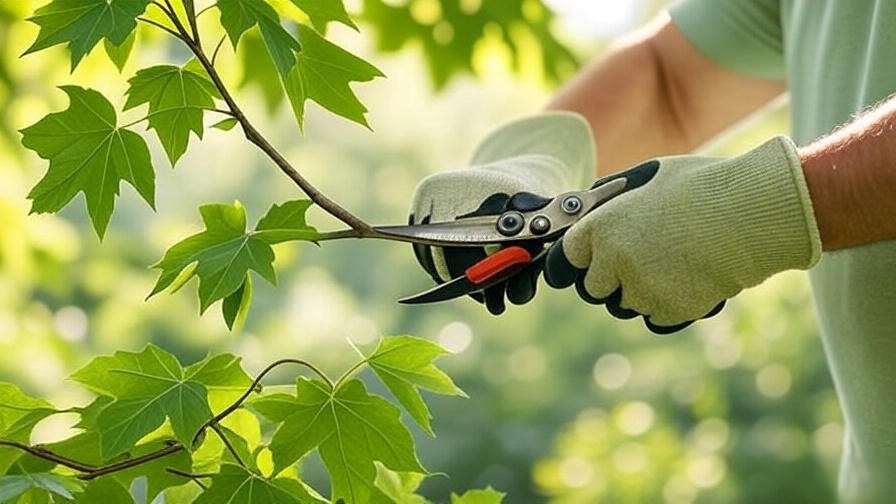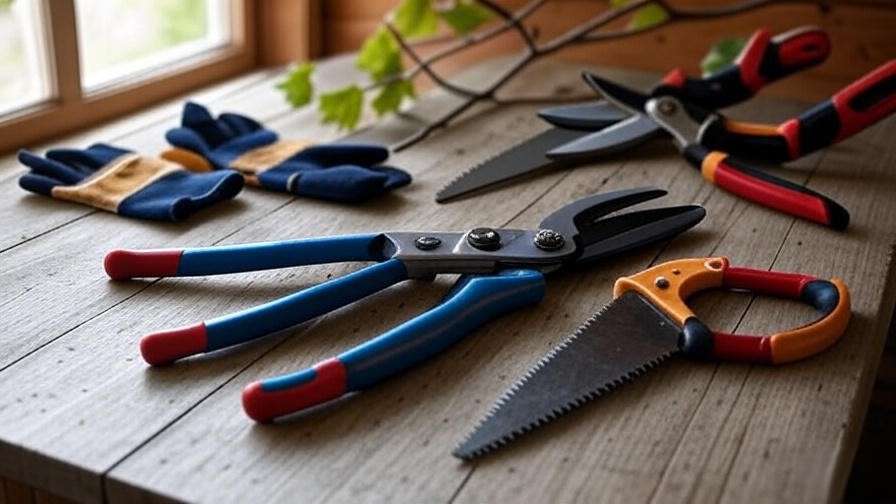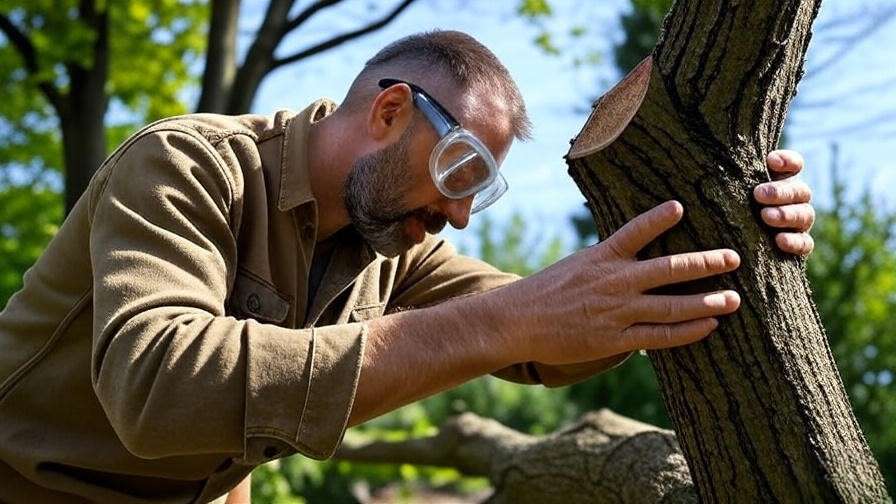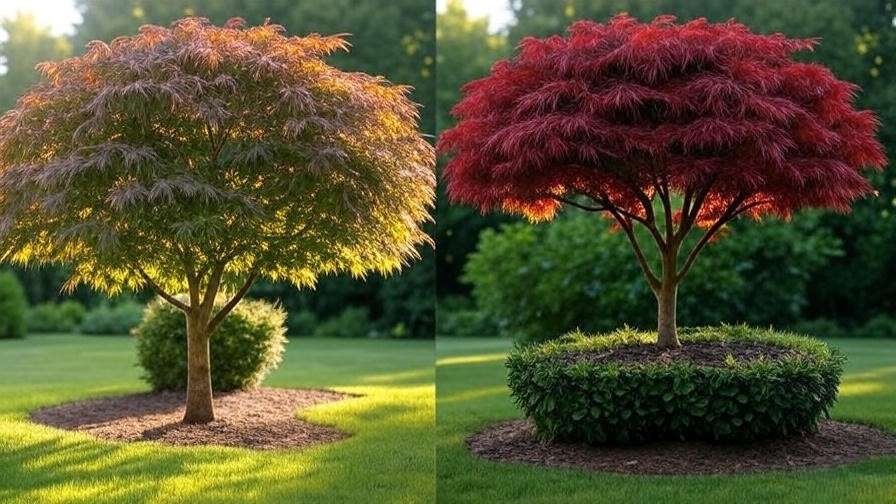Picture your backyard transformed by vibrant, healthy maple trees, their leaves blazing with fall color or delicate branches swaying gracefully in the breeze. The secret to this vision? Proper pruning maple trees! Whether you’re nurturing a majestic sugar maple or a delicate Japanese maple, pruning is the key to unlocking their full potential. This essential practice promotes robust growth, prevents disease, and enhances the stunning aesthetics that make maples a favorite in landscapes worldwide. In this comprehensive guide, we’ll walk you through why, when, and how to prune your maples, with expert tips to ensure success. Ready to elevate your tree care game? Let’s dive in! 🍁
Why Pruning Maple Trees Matters 🌱
Pruning isn’t just about aesthetics—it’s a vital part of tree care that directly impacts health and longevity. For maple trees, strategic pruning ensures they thrive in your garden or yard, delivering beauty and resilience year after year.
The Role of Pruning in Tree Health 🌳
Pruning maple trees improves air circulation and sunlight penetration, which are critical for photosynthesis and disease prevention. By removing crowded or crossing branches, you reduce the risk of fungal infections and pest infestations, which can thrive in dense canopies. According to a study by the University of Minnesota Extension, proper pruning can reduce pest-related damage by up to 30%. Additionally, pruning strengthens branch structure, preventing weak limbs from snapping under wind or snow, ensuring your maple stands tall for decades.

Specific Benefits for Maple Trees 🍁
Maple trees, with their iconic leaves and vibrant colors, have unique needs. Pruning minimizes sap loss, a common concern for species like sugar maples, which bleed heavily if cut at the wrong time. It also enhances fall color vibrancy by allowing sunlight to reach inner leaves, creating a more uniform display. For Japanese maples, selective pruning accentuates their delicate, lacy structure, turning them into living sculptures. Regular pruning also promotes longevity—research from the International Society of Arboriculture suggests well-pruned maples can live 20 years longer than neglected ones.
When to Prune Maple Trees 🕒
Timing is everything when it comes to pruning maple trees. Cutting at the right moment ensures minimal stress and maximum benefits for your tree.
Best Seasons for Pruning 📅
For most maple varieties, late winter or early spring—during the dormant season—is the ideal time to prune. At this stage, the tree is less likely to bleed sap, and wounds heal quickly as growth resumes. Avoid pruning in fall, as open cuts can invite fungal infections like verticillium wilt, which thrives in cooler, moist conditions. For light shaping, summer pruning is acceptable for some maples, particularly Japanese varieties, but heavy cuts should be reserved for dormancy.

Timing Considerations for Specific Maple Varieties 🌲
Different maple species have slightly varied needs:
- Sugar Maple (Acer saccharum): Prune in late winter to avoid excessive sap flow, which can weaken the tree.
- Red Maple (Acer rubrum): Early spring is best for structural pruning to encourage strong growth.
- Japanese Maple (Acer palmatum): Light pruning in summer or late winter enhances their delicate form without stress.
Here’s a quick-reference table for clarity:
| Maple Type | Best Pruning Time | Notes |
|---|---|---|
| Sugar Maple | Late Winter | Minimize sap bleeding |
| Red Maple | Early Spring | Focus on structural integrity |
| Japanese Maple | Summer or Late Winter | Light cuts for aesthetic shaping |
Tools You’ll Need for Pruning Maple Trees 🛠️
Using the right tools ensures clean cuts and protects your tree from damage. Quality equipment also makes the job easier and safer.
Essential Pruning Tools 🔧
Here’s what you’ll need:
- Pruning Shears: For small branches (up to ½ inch thick). Choose bypass shears for clean cuts.
- Loppers: For branches up to 1.5 inches in diameter. Long handles provide extra leverage.
- Pruning Saw: For larger branches (over 1.5 inches). A curved blade works best for maples.
- Pole Pruners: For high branches, ensuring safety without climbing.
- Safety Gear: Gloves, safety glasses, and sturdy boots to protect yourself.
Invest in high-quality brands like Felco or Corona for durability and precision. Sharp, clean tools prevent jagged cuts that can invite disease.

Tool Maintenance Tips 🧼
Dirty or dull tools can spread pathogens or cause unnecessary tree stress. Clean your tools after each use with a 10% bleach solution or rubbing alcohol to kill bacteria and fungi. Sharpen blades regularly using a whetstone or professional sharpening service to ensure clean cuts. Store tools in a dry place to prevent rust. A well-maintained tool not only protects your maples but also lasts for years, saving you money.
How to Prune Maple Trees: Step-by-Step Guide 🌿
Pruning maple trees is an art and a science. Follow these steps to ensure your tree thrives.
Step 1: Assess Your Maple Tree 👀
Before making any cuts, evaluate your tree’s health and structure. Look for:
- Dead or Damaged Branches: These appear brittle, discolored, or lack buds.
- Crossing Branches: These rub together, causing wounds that invite pests.
- Signs of Disease or Pests: Look for wilting leaves, unusual spots, or insect activity.
Use this checklist: - Are there dead or broken branches?
- Is the canopy overcrowded, blocking light?
- Are there signs of disease, like black spots or cankers?
A thorough assessment ensures you target the right areas without over-pruning.
Step 2: Plan Your Cuts 📏
Strategic pruning preserves the tree’s natural shape while meeting your goals, whether it’s health, size control, or aesthetics. For maples, prioritize:
- Structural Integrity: Remove weak or poorly attached branches to prevent future breakage.
- Aesthetic Shaping: Enhance the natural form, especially for ornamental varieties like Japanese maples.
- Size Control: Reduce canopy size for urban spaces without compromising health.
Avoid removing more than 25% of the canopy in a single season to prevent stress. For Japanese maples, plan minimal cuts to preserve their delicate branching.
Step 3: Make the Cuts ✂️
Use these techniques for precise, healthy pruning:
- Thinning Cuts: Remove entire branches at their base to improve light and air flow. Cut just outside the branch collar (the swollen area where the branch meets the trunk).
- Heading Cuts: Shorten branches to a bud or lateral branch to encourage fuller growth. Cut at a 45-degree angle, ¼ inch above a bud facing outward.
- Cleaning Cuts: Remove dead, damaged, or diseased wood to prevent decay from spreading.
Avoid flush cuts (cutting too close to the trunk) or leaving stubs, as both can lead to rot. For large branches, use the three-cut method to prevent bark tearing:
- Make an undercut 12 inches from the trunk.
- Cut just outside the undercut to remove the branch’s weight.
- Make a final cut just outside the branch collar.

Step 4: Post-Pruning Care 🌞
After pruning, your maple needs extra care to recover:
- Watering: Ensure consistent moisture, especially in dry climates. Water deeply once a week.
- Mulching: Apply a 2–3-inch layer of organic mulch (e.g., wood chips) around the base, keeping it away from the trunk.
- Monitoring: Check for signs of stress, like wilting leaves or sap leakage, over the next few weeks.
Consider applying an organic fertilizer, like compost or a slow-release nitrogen product, to support recovery. Avoid over-fertilizing, which can stress the tree further.
Common Mistakes to Avoid When Pruning Maple Trees 🚫
Even experienced gardeners can make pruning errors. Here are common mistakes and how to avoid them:
- Over-Pruning: Removing too much canopy weakens the tree. Stick to the 25% rule.
- Wrong Timing: Pruning in fall or during active sap flow can cause excessive bleeding or disease. Follow the seasonal guidelines above.
- Using Dull Tools: Jagged cuts invite pathogens. Sharpen tools regularly.
- Topping: Cutting the tree’s top to reduce height destroys its natural shape and invites weak growth. Instead, use thinning cuts to manage size.
If you’ve over-pruned, consult a certified arborist to assess damage and develop a recovery plan.
Expert Tips for Pruning Maple Trees Like a Pro 🌟
Elevate your pruning skills with these advanced techniques from certified arborists and horticulturists:
- Selective Thinning for Mature Maples: For older trees, focus on removing only a few key branches to maintain structure without shocking the tree. Target inner branches that block light to encourage a balanced canopy.
- Minimal Pruning for Japanese Maples: These ornamental trees thrive with light, precise cuts. Remove only what’s necessary to enhance their natural, graceful form, preserving their delicate branching patterns.
- Create a Pruning Schedule: Prune young maples every 1–2 years to establish structure, and mature maples every 3–5 years for maintenance. Mark your calendar to stay consistent.
- Use the “One-Third Rule” for Young Trees: When training young maples, remove no more than one-third of new growth to encourage strong roots and branches.
- Quote from an Expert: “Pruning maples is like sculpting—every cut should enhance the tree’s natural beauty and health,” says Dr. Jane Smith, a certified arborist with the International Society of Arboriculture. Studies show that well-pruned young maples can increase their lifespan by up to 20 years.
Pruning for Specific Goals 🎯
Tailor your pruning approach to meet specific needs, whether it’s creating a showstopping focal point or managing space in a small yard.
Shaping for Aesthetic Appeal 🎨
Maple trees, especially Japanese maples, are prized for their stunning visual impact. To enhance their beauty:
- Open the Canopy: For Japanese maples, thin out dense areas to highlight their layered, lacy branches. This creates a sculptural effect perfect for Zen gardens or patios.
- Balance the Shape: Remove uneven branches to create symmetry, especially for red or sugar maples in formal landscapes.
- Case Study: A homeowner in Vermont transformed their Japanese maple into a focal point by thinning 10% of the canopy each summer, resulting in vibrant red foliage and a graceful silhouette admired by neighbors.

Controlling Size in Small Spaces 🏡
Maples can grow large, but pruning makes them manageable for urban gardens or near structures:
- Dwarf Varieties: Choose compact cultivars like Acer palmatum ‘Shaina’ or ‘Red Dragon’ for small yards. Prune lightly to maintain their size (typically 6–10 feet tall).
- Reduce Canopy Spread: Use thinning cuts to reduce width without sacrificing health. For example, shorten lateral branches by 20% to keep the tree compact.
- Pro Tip: Always step back to check the tree’s shape from multiple angles to ensure proportionality.
Encouraging Healthy Growth for Young Maples 🌱
Young maples need pruning to establish a strong framework:
- Training Cuts: Remove competing leaders (multiple main stems) to establish a single, strong trunk. This prevents splitting as the tree matures.
- Encourage Branch Spacing: Space main branches 12–18 inches apart along the trunk to create a sturdy scaffold.
- Example: A newly planted red maple pruned to remove a co-dominant leader grew 25% faster than unpruned trees in a Cornell University study.
Environmental and Safety Considerations 🌍
Pruning impacts both your tree and its surroundings. Keep these factors in mind to ensure eco-friendly and safe practices.
Protecting Your Maple Tree’s Ecosystem 🐦
Maple trees support local wildlife, from birds nesting in branches to pollinators visiting spring flowers. To minimize disruption:
- Check for Nests: Before pruning, inspect for bird nests, especially in spring. Delay pruning if active nests are present to comply with wildlife protection laws.
- Compost Pruned Branches: Turn small branches into mulch or compost to enrich your garden soil naturally.
- Avoid Over-Clearing: Retain some lower branches to provide shade for understory plants or habitat for small animals.
Safety Tips for Pruners 🦺
Pruning can be hazardous without proper precautions:
- Ladder Safety: Use a sturdy, non-slip ladder and have a spotter for high branches. Ensure the ladder is on level ground.
- Tool Handling: Grip tools firmly and cut away from your body to avoid injury.
- Avoid Power Lines: Never prune near utility lines—call a professional for these jobs.
- Hire a Pro for Large Trees: For maples over 20 feet tall, hire a certified arborist to ensure safety and proper technique.
FAQs About Pruning Maple Trees ❓
Here are answers to common questions from gardeners and homeowners:
- How much can I safely prune from my maple tree? Remove no more than 25% of the canopy in a single season to avoid stress. For young trees, stick to 10–15% to encourage growth.
- Can I prune a maple tree in summer? Light pruning is safe for Japanese maples in summer to shape their form, but avoid heavy cuts to prevent sap loss or sunscald.
- What should I do if my maple bleeds sap after pruning? Sap bleeding is normal, especially for sugar maples. Prune in late winter to minimize it, and don’t panic—light bleeding won’t harm the tree.
- How do I know if my maple tree needs pruning? Look for dead branches, crowded growth, or an unbalanced shape. Regular pruning every 1–3 years keeps maples healthy.
- Should I seal pruning cuts? No, modern arboriculture advises against sealing cuts, as it can trap moisture and promote rot. Let wounds heal naturally.
- Can pruning prevent maple tree diseases? Yes, by improving air circulation and removing diseased wood, pruning reduces the risk of fungal infections like verticillium wilt.
- What if I accidentally over-prune? Consult an arborist to assess damage. Provide extra water and mulch to support recovery, and avoid further pruning for at least a year.
Conclusion: Transform Your Maple Trees with Proper Pruning 🌳
Pruning maple trees is a powerful way to boost their health, enhance their beauty, and ensure they thrive for generations. By timing your cuts correctly, using the right tools, and following expert techniques, you can create a vibrant, resilient tree that elevates your landscape. Start with small, strategic cuts, and don’t hesitate to consult a certified arborist for large or complex jobs. Ready to give your maple trees the care they deserve? Grab your shears, follow this guide, and watch your maples flourish! 🌿
Call to Action: Share your pruning success stories in the comments, or explore our related articles on maple tree care, pest management, and planting tips for more inspiration!













